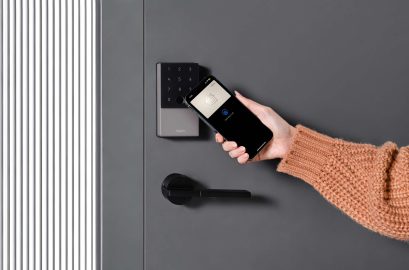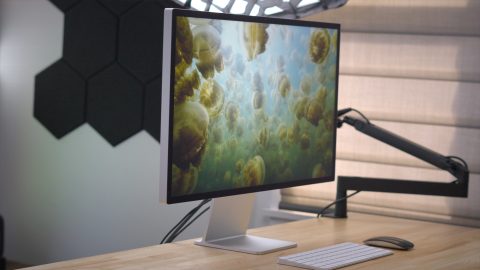
A statement today on TSA’s website announced new security protocol coming to all U.S. airports for how electronic devices will be screened.
To ensure the security of airline passengers and the nation’s airports, the Transportation Security Administration (TSA) is implementing new, stronger screening procedures for carry-on items that require travelers to place all electronics larger than a cell phone in bins for X-ray screening in standard lanes. Following extensive testing and successful pilots at 10 airports, TSA plans to expand these measures to all U.S. airports during the weeks and months ahead.
The TSA mentions that travelers may see more bag checks (presumably during the rollout period), but that it has found “ways to improve screening procedures with quicker and more targeted measures to clear the bags.”
The new security measures are already in place in the 10 airports that piloted the program. For frequent travelers and those who would prefer a shorter airport security experience, the press release notes that the these measures don’t apply to those enrolled in TSA Pre✓®.
Read below for the full press release:
New U.S. airport screening procedures for carry-on bags to better focus on threats
WASHINGTON – To ensure the security of airline passengers and the nation’s airports, the Transportation Security Administration (TSA) is implementing new, stronger screening procedures for carry-on items that require travelers to place all electronics larger than a cell phone in bins for X-ray screening in standard lanes. Following extensive testing and successful pilots at 10 airports, TSA plans to expand these measures to all U.S. airports during the weeks and months ahead.
Due to an increased threat to aviation security, DHS Secretary John Kelly announced in late June new security requirements for nearly 280 airports in more than 100 countries. In an effort to raise the baseline for aviation security worldwide, TSA continues to work closely with airports and airlines to enhance security measures and stay ahead of the evolving threat.
“Whether you’re flying to, from, or within the United States, TSA is committed to raising the baseline for aviation security by strengthening the overall security of our commercial aviation network to keep flying as a safe option for everyone,” said TSA Acting Administrator Huban A. Gowadia.
As new procedures are phased in, TSA officers will begin to ask travelers to remove electronics larger than a cell phone from their carry-on bags and place them in a bin with nothing on top or below, similar to how laptops have been screened for years. This simple step helps TSA officers obtain a clearer X-ray image.
It is possible that passengers may experience more bag checks, however, through extensive testing, TSA identified ways to improve screening procedures with quicker and more targeted measures to clear the bags. The new screening procedures in standard lanes are already in place at the following 10 U.S. airports with plans to expand to all airports during the weeks and months ahead:
Boise Airport (BOI)
Colorado Springs Airport (COS)
Detroit Metropolitan Airport (DTW)
Fort Lauderdale-Hollywood International Airport (FLL)
Logan International Airport (BOS)
Los Angeles International Airport (LAX)
Lubbock Preston Smith International Airport (LBB)
Luis Muñoz Marín International Airport (SJU)
McCarran International Airport (LAS)
Phoenix Sky Harbor International Airport (PHX)
In standard screening lanes, TSA officers will be stationed in front of the checkpoint X-ray machines to guide passengers through the screening process and recommend how best to arrange their carry-on items for X-ray screening. Travelers are encouraged to organize their carry-on bags and keep them uncluttered to ease the screening process and keep the lines moving. There are no changes to what travelers can bring through the checkpoint; food and liquid items that comply with the 3-1-1 liquids rule, electronics, and books continue to be allowed in carry-on bags.
“It is critical for TSA to constantly enhance and adjust security screening procedures to stay ahead of evolving threats and keep passengers safe. By separating personal electronic items such as laptops, tablets, e-readers and handheld game consoles for screening, TSA officers can more closely focus on resolving alarms and stopping terror threats,” said Gowadia.
The stronger security measures do not apply to passengers enrolled in TSA Pre✓® who are using TSA Pre✓® lanes. TSA also marked another milestone earlier this month with TSA Pre✓® now available at 200 airports nationwide. Travelers enrolled in TSA Pre✓® do not need to remove shoes, 3-1-1 liquids, laptops, electronics, light outerwear, or belts. The program allows TSA to focus resources on passengers who may pose a high risk to security while providing expedited screening to those travelers who have been identified as low-risk, trusted travelers.
Check out 9to5Mac on YouTube for more Apple news:
FTC: We use income earning auto affiliate links. More.





Comments